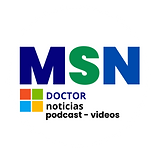

CVA Stroke, known as Stroke
Por el Doctor Eddy Monge
A stroke occurs when blood flow to a part of the brain is interrupted as a result of a broken or blocked blood vessel. The stroke can be hemorrhagic or ischemic.
A hemorrhagic stroke occurs when a blood vessel in the brain ruptures allowing blood to spill through the brain.
Ischemic stroke occurs when a blood vessel that carries blood to the brain becomes blocked or restricted due to severely narrowed arteries or a blood clot.
Because treatment depends on the type of stroke, a head CT or MRI of the head may be used to help diagnose your condition.
Other tests may include blood tests, electrocardiograms (ECG or EKG), carotid ultrasound, echocardiogram, or cerebral angiography. Immediate stroke treatment can help save lives and reduce disability by restoring blood flow (in the case of an ischemic stroke) or by controlling bleeding and reducing pressure in the brain (in the case of an ischemic stroke). hemorrhagic stroke).
✨ Beneficios Principales
-
Reducción significativa en la frecuencia de crisis
-
Disminución en la intensidad de los episodios
-
Mejor control sobre la condición
-
Mayor calidad de vida para los pacientes
-
Posibilidad de reducir la medicación
What is a stroke?
A stroke occurs when the flow of blood to a part of the brain is interrupted by the presence of a blood vessel that is blocked or ruptured. Brain cells that do not receive a constant supply of oxygenated blood can die, causing permanent brain damage.
There are two types of stroke: hemorrhagic and ischemic.
A hemorrhagic stroke It occurs when a blood vessel in the brain is ruptured or damaged, thus allowing blood to escape to the brain.
A ischemic stroke occurs when a blood vessel that carries blood to the brain is blocked or restricted due to marked narrowing of the arteries or a thickened mass of blood called blood clot.
Blocked arteries: Fat, cholesterol, and other substances can build up on the walls of your blood vessels. Over time, these substances harden and form structures called license plate. The accumulation of fatty deposits and plaque clogs the arteries, narrowing the passage for blood.
Blood clots: When a clot forms in a blood vessel cerebral who is already very thin, then the stroke is called thrombotic stroke. When a blood clot that has formed in other parts of the body breaks off and travels to a blood vessel in the brain, the result is a embolic stroke, or cerebral embolism. An embolic stroke can also be the result of an air bubble or other foreign substance in the blood that moves into and blocks a cerebral blood vessel.

How a stroke is diagnosed and evaluated
The first step in evaluating a stroke patient is to determine whether the patient is experiencing a hemorrhagic or ischemic stroke so that the correct treatment can be started. The first exam performed is usually a CT or MRI of the head.
Images by Cerebral TAC
Magnetic resonance Cerebral (see expanded information here)
To help determine the type, location, and cause of a stroke, and rule out other disorders, doctors may use:
Blood tests.
Electrocardiogram
Carotid ultrasound / Doppler ultrasound
Cerebral Angiography
Symptoms, which usually come on suddenly and without warning, include:
Very bad headache with no known cause
Numbness or weakness in the face, arm, or leg (especially on one side of the body)
Confusion and difficulty speaking or understanding speech
Trouble seeing with one or both eyes
Dizziness, loss of balance or coordination